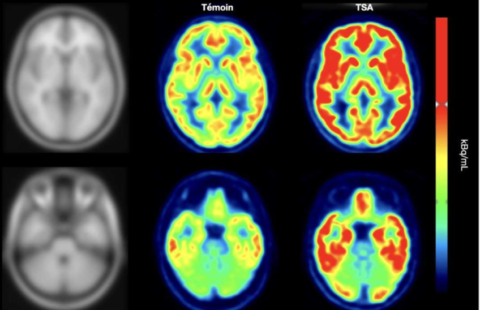While we sleep, our self-awareness and our awareness of the outside world are reduced. Why? Habib Benali, Director of Research at the Inserm functional imaging laboratory (Unit 678 Inserm/UPMC) and his team have been investigating this phenomenon. The research scientists have shown that during nonrapid eye movement sleep, the brain’s activity is re-organized into networks that communicate less with each other than during wakefulness. The results of this study on brain activity have been published in the PNAS review.
Deep slow sleep is a sleep phase in which our self-awareness and our consciousness of the outside world are considerably reduced. Yet the neurons in our brain are still highly active during this phase. So consciousness is not just associated to brain activity, but rather to its ability to process information. This is the conclusion of the study carried out by the research scientists from the functional imaging laboratory (Inserm/Université Pierre et Marie Curie) of Pitié Salpêtrière, and the Cyclotron research center of Liège.
By measuring the quantity of information exchanged between different areas of the brain, the research scientists were able to show that the flow of information in the brain during sleep was different from that observed during wakefulness.
“During sleep, the activity of the brain seems to be organized into a multitude of smaller networks. Inside each network, data exchange is just as active, even more active than during wakefulness, but communication between these networks decreases“, explains Habib Benali, Director of Research at Inserm.
The figure shows that the brain (B) contains different networks (colored circles) that group together several brain areas (small peripheral black dots). The longer the black lines connecting these structures (colored circles and black dots), the more able they are to process information independently. During sleep (situation on the right), the distance between these structures increases, meaning that the information in these small clusters of brain areas is processed on a more local scale.
The research team believes that this is due to a hierarchical reorganization of the flow of information during NREM sleep, since this has been observed repeatedly at several levels in the brain. “We suggest that the modification of the information flows between areas of the brain reduces the brain’s ability to generate a unified representation of the person and the outside World” states Habib Benali.


